
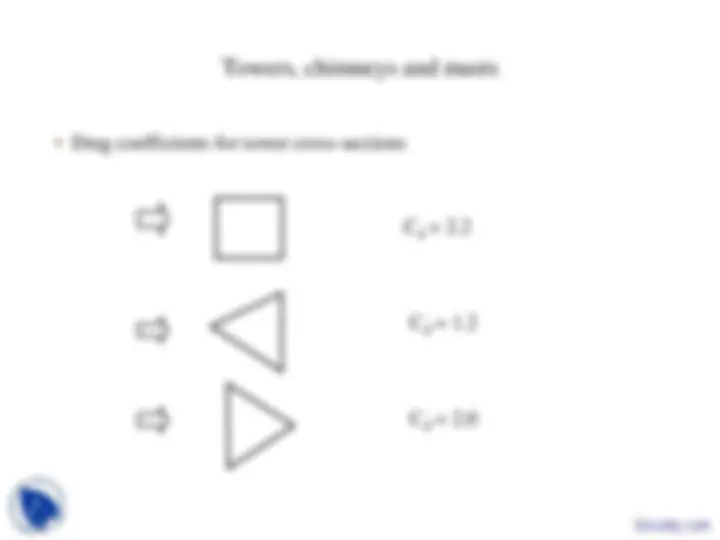
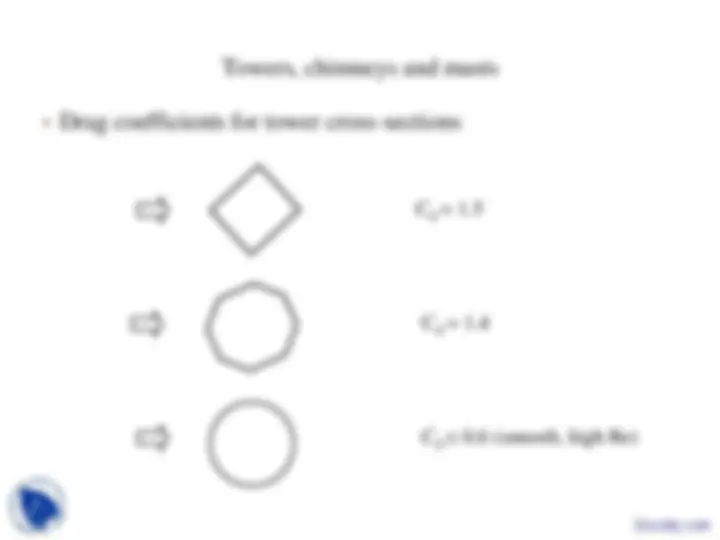
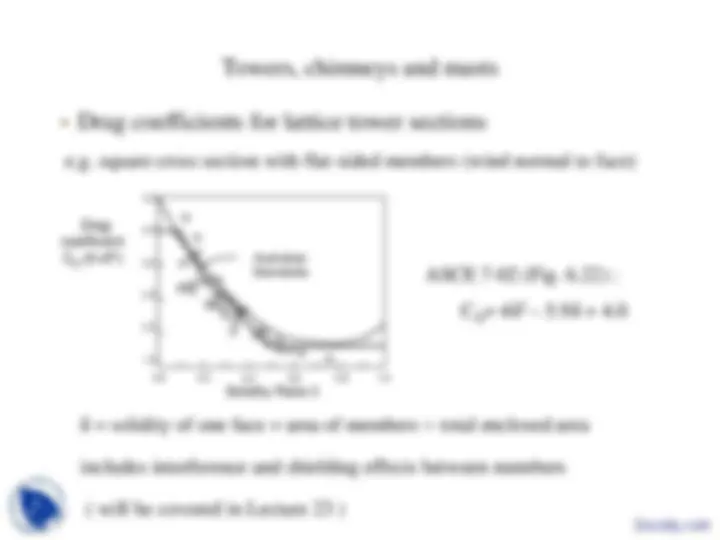
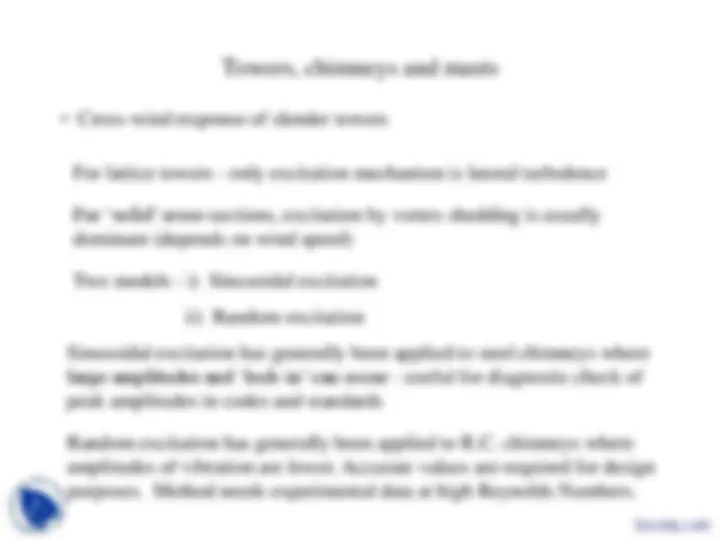
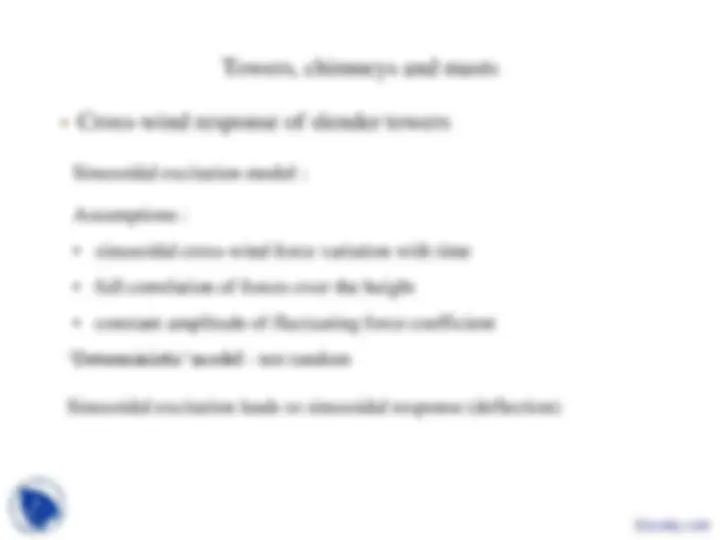
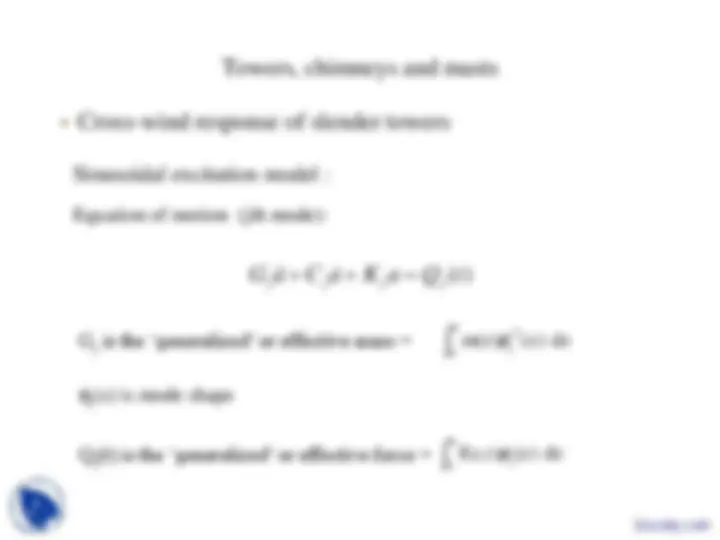
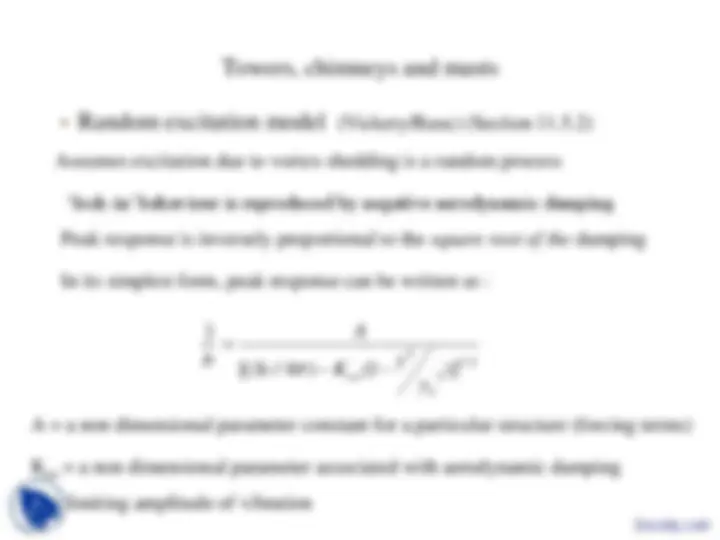
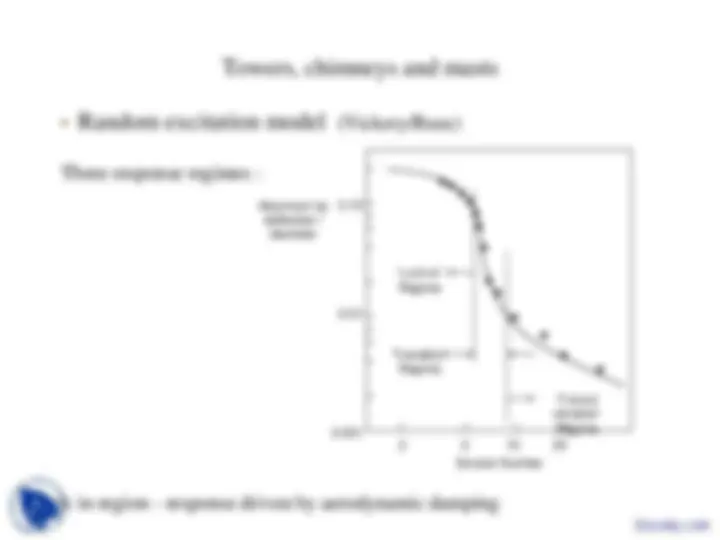
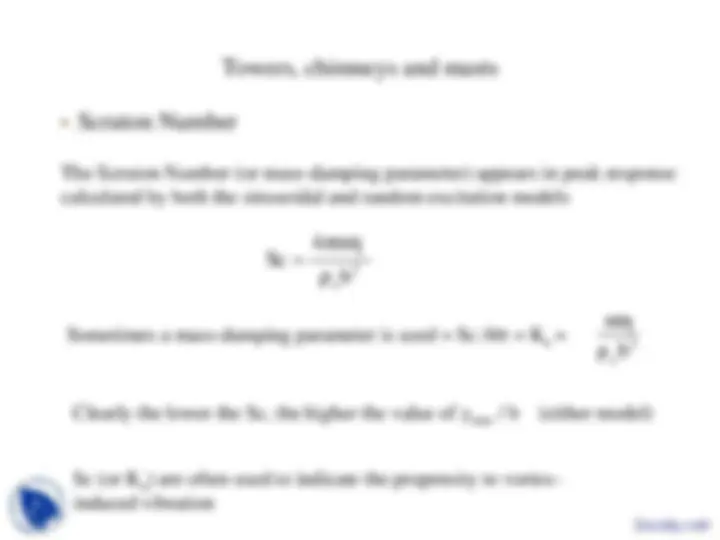
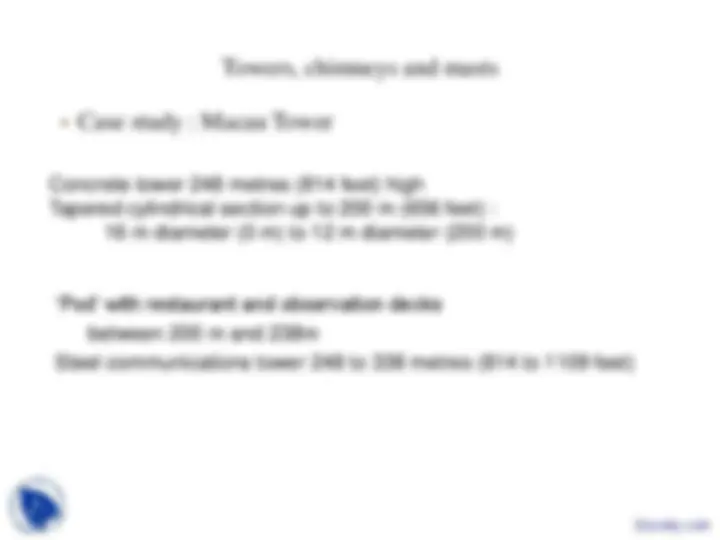
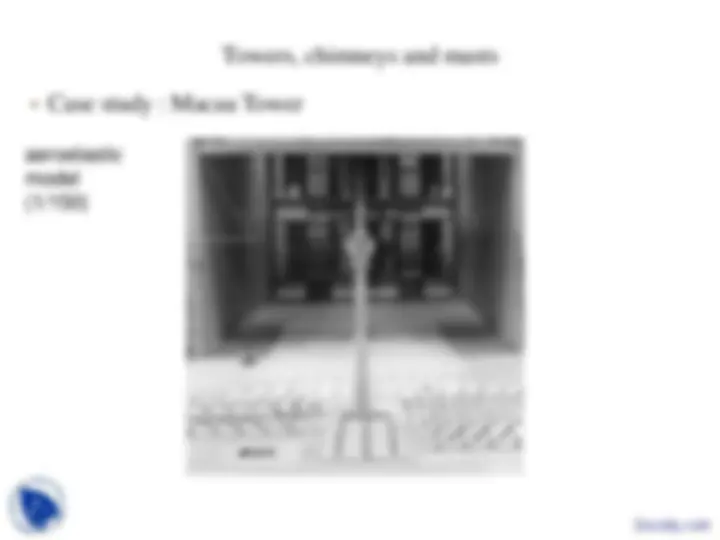
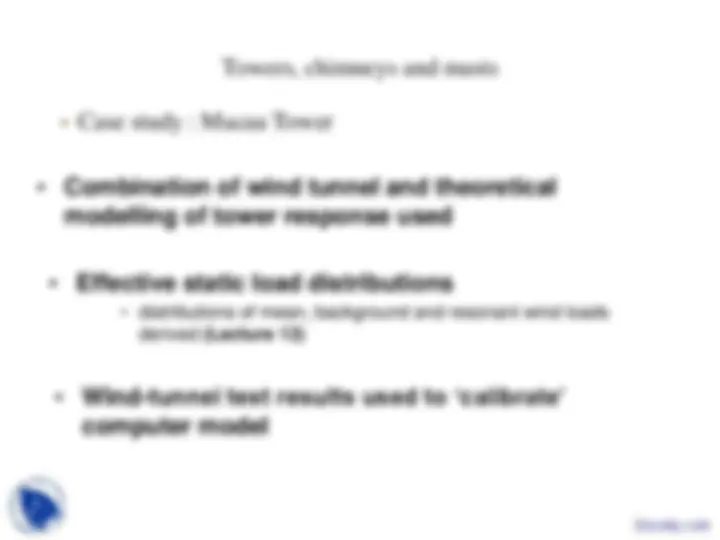
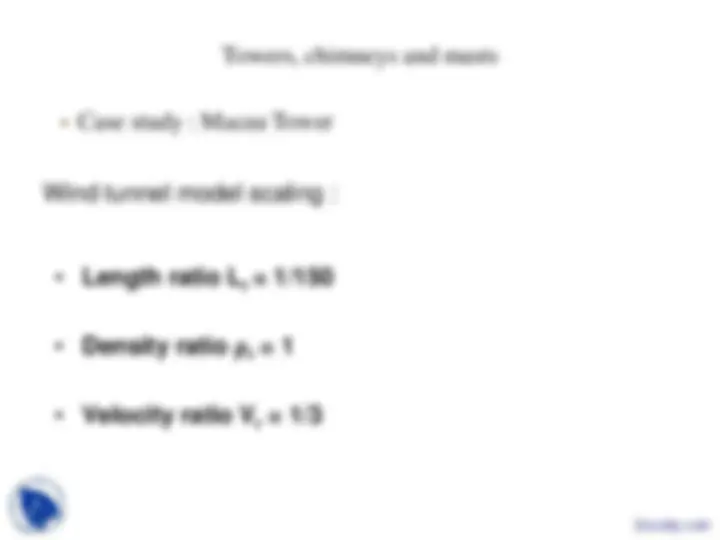
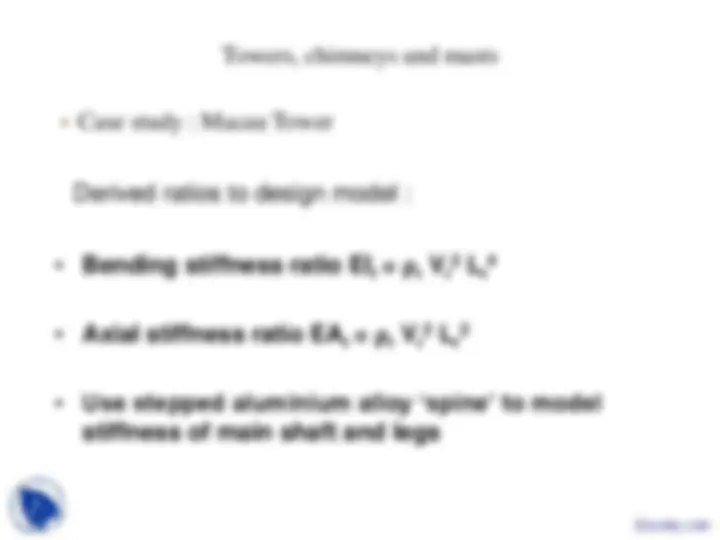
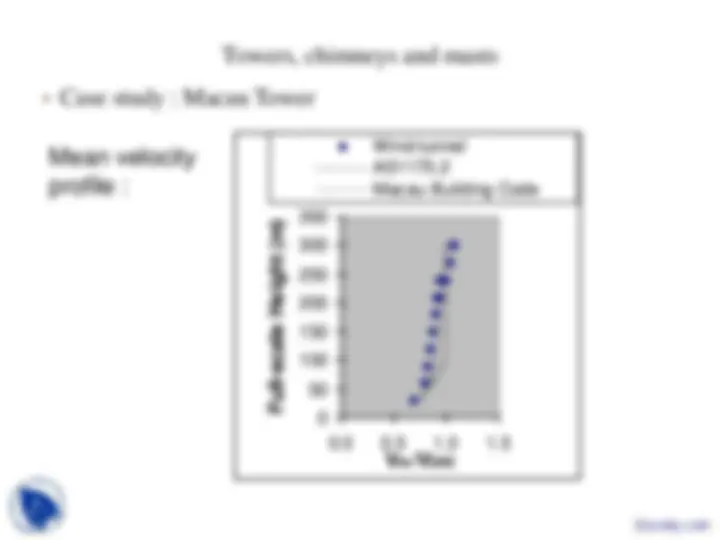
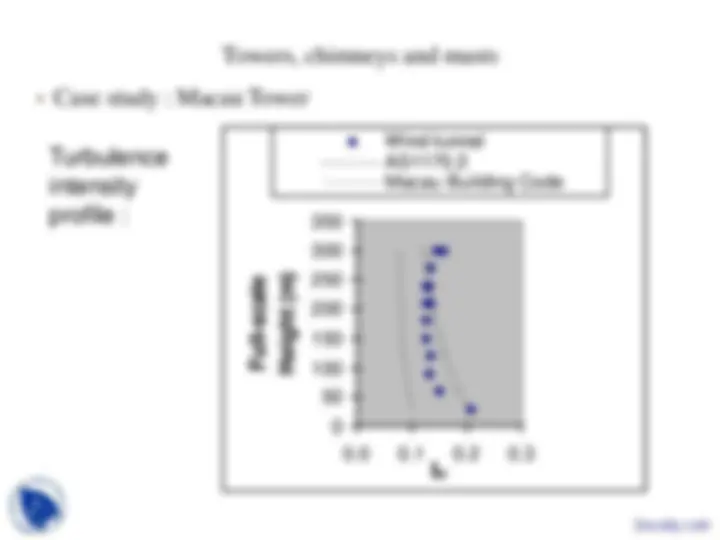
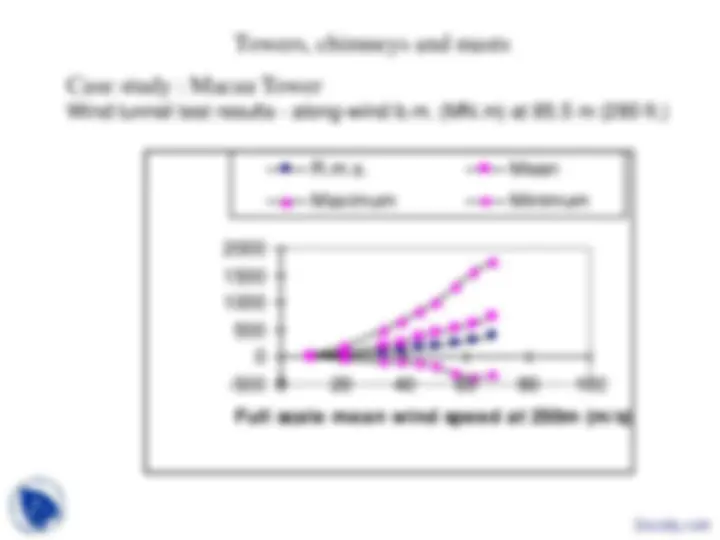
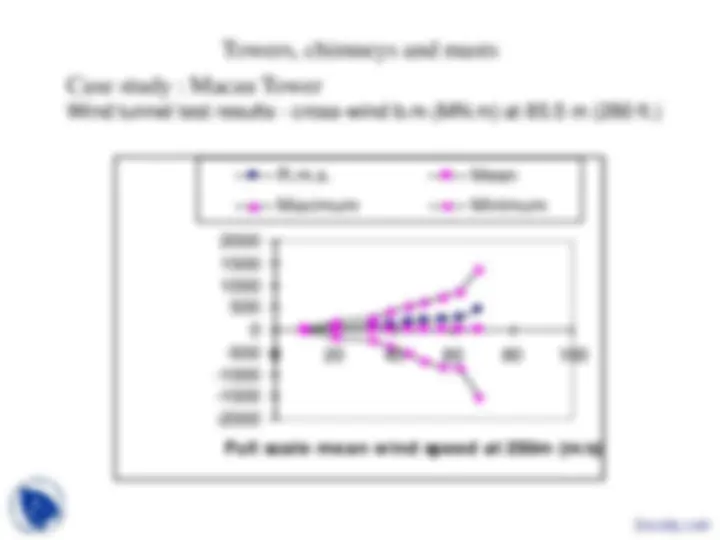
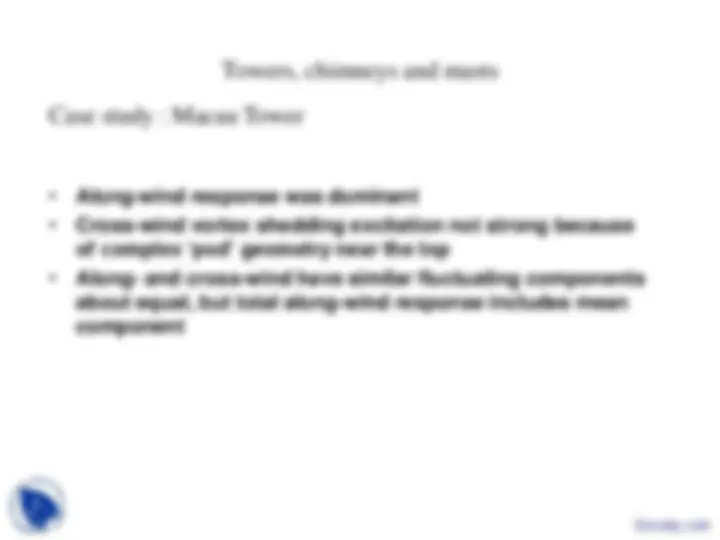
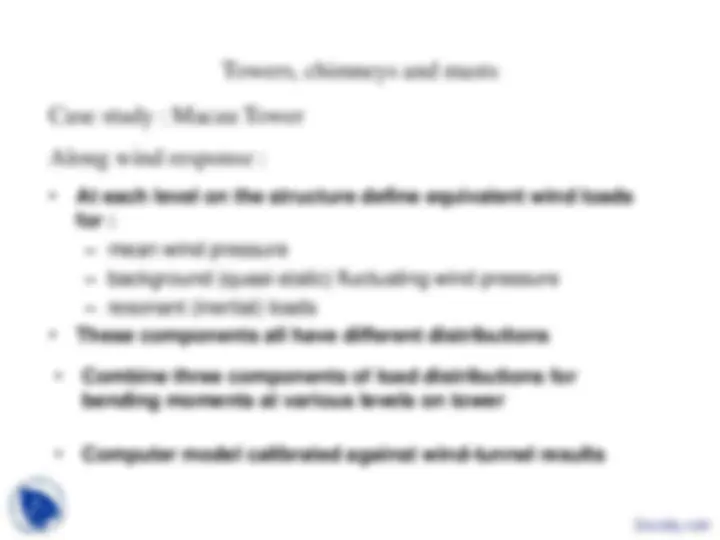
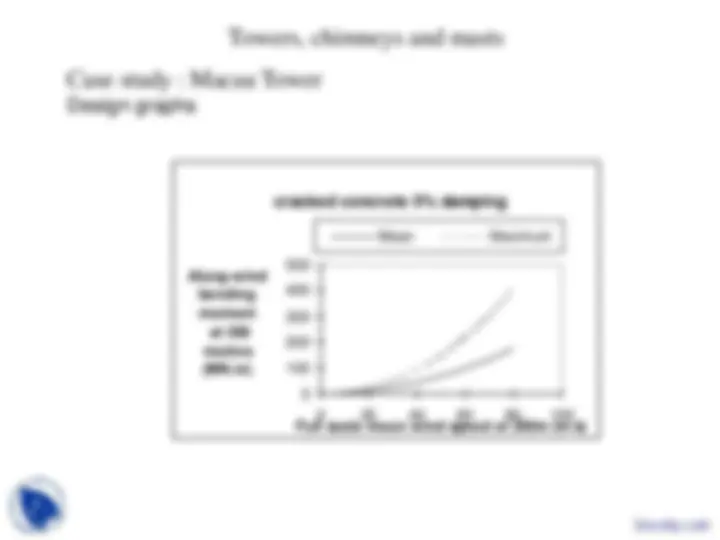
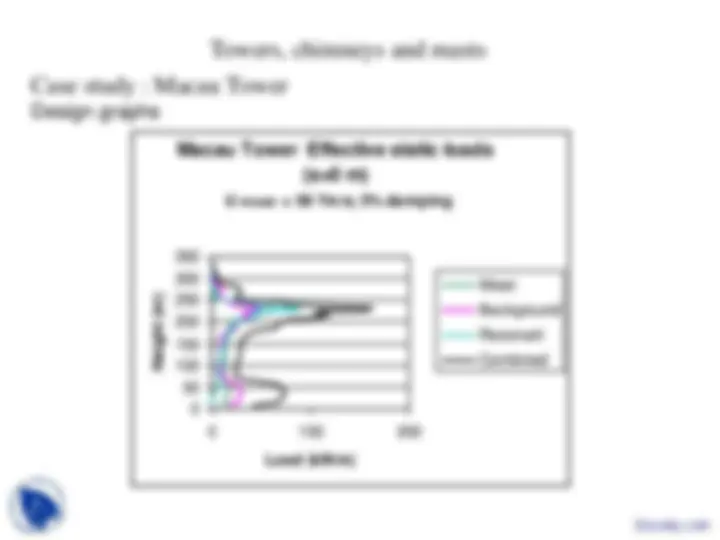


Study with the several resources on Docsity

Earn points by helping other students or get them with a premium plan


Prepare for your exams
Study with the several resources on Docsity

Earn points to download
Earn points by helping other students or get them with a premium plan
Community
Ask the community for help and clear up your study doubts
Discover the best universities in your country according to Docsity users
Free resources
Download our free guides on studying techniques, anxiety management strategies, and thesis advice from Docsity tutors
Some concept of Wind Engineering are Aeroelastic Effects, Along-Wind Dynamic Response, Antennas and Open-Frame Structures, Atmospheric Boundary Layers and Turbulence, Atmospheric Boundary, Basic Bluff-Body Aerodynamics. Main points of this lecture are: Chimneys and Masts, Chimneys and Masts, Tower Cross-Sections, Drag Coefficients, Lattice Tower Sections, Flat-Sided Members, Between Members, Tip Deflection, Shear Depend, Non-Linear Mode Shape
Typology: Slides
1 / 30

This page cannot be seen from the preview
Don't miss anything!























critical velocity for vortex shedding 5n 1 b for circular sections 10 n 1 b for square sections
Cd = 1.
Cd = 1.
Cd 0.6 (smooth, high Re)
= solidity of one face = area of members total enclosed area
Australian Standards
0.0 0.2 0.4 0.6 0.8 1. Solidity Ratio
Drag coefficient CD (q= 0 O)
e.g. square cross section with flat-sided members (wind normal to face)
includes interference and shielding effects between members
( will be covered in Lecture 23 )
ASCE 7-02 (Fig. 6.22) : CD= 4^2 – 5.9 + 4.
0
20
40
60
80
100
120
140
160
0.0 0.2 0.4 0.6 0.8 1. Effective pressure (kPa)
Height (m)
Combined
Resonant
Background Mean
Separate effective static load distributions for mean, background and resonant components (Lecture 13, Chapter 5)
For lattice towers - only excitation mechanism is lateral turbulence
For ‘solid’ cross-sections, excitation by vortex shedding is usually dominant (depends on wind speed)
Two models : i) Sinusoidal excitation ii) Random excitation Sinusoidal excitation has generally been applied to steel chimneys where large amplitudes and ‘lock-in’ can occur - useful for diagnostic check of peak amplitudes in codes and standards
Random excitation has generally been applied to R.C. chimneys where amplitudes of vibration are lower. Accurate values are required for design purposes. Method needs experimental data at high Reynolds Numbers.
Equation of motion (jth mode):
j(z) is mode shape
G (^) j a Cja Kja Qj ( t )
Gj is the ‘generalized’ or effective mass =
h 0
2 m(z) j (z) dz
Qj(t) is the ‘generalized’ or effective force =
h
Representing the applied force Qj(t) as a sinusoidal function of time, an expression for the peak deflection at the top of the structure can be derived :
(see Section 11.5.1 in book)
^ h 0
2 j
2
h 0 j 2 j j
2
h 0 j
2 max a 4 π Sc St (z) dz
C (z) dz 16 π G ηSt
ρ C b (z) dz b
y (h)
where j is the critical damping ratio for the jth mode, equal to j j
j G K
U(z )
n b U(z )
n b St e
j e
s^
2 a
j ρ b
4 mη Sc
^ (Scruton Number or mass-damping parameter) m = average mass/unit height
Strouhal Number for vortex shedding ze = effective height ( 2h/3)
Docsity.com
Assumes excitation due to vortex shedding is a random process
A = a non dimensional parameter constant for a particular structure (forcing terms)
In its simplest form, peak response can be written as :
Peak response is inversely proportional to the square root of the damping
1 2 2
2 [( / 4 ) ( 1 )]
/ L
ao (^) y Sc K y
b
y
‘lock-in’ behaviour is reproduced by negative aerodynamic damping
yL= limiting amplitude of vibration
Kao = a non dimensional parameter associated with aerodynamic damping
Three response regimes :
Lock in region - response driven by aerodynamic damping
‘Lock-in’ Regime
‘Transition’ Regime ‘Forced vibration’ Regime 2 5 10 20
Scruton Number
Maximum tip deflection / diameter
Sc (or Ka) is often used to indicate the propensity to vortex-induced vibration
e.g. for a circular cylinder, Sc > 10 (or Ka > 0.8), usually indicates low amplitudes of vibration induced by vortex shedding for circular cylinders
American National Standard on Steel Stacks (ASME STS-1-1992) provides criteria for checking for vortex-induced vibrations, based on Ka
A method based on the random excitation model is also provided in ASME STS-1-1992 (Appendix 5.C) for calculation of displacements for design purposes.
Mitigation methods are also discussed : helical strakes, shrouds, additional damping (mass dampers, fabric pads, hanging chains)
For mitigation of vortex-shedding induced vibration :
Eliminates cross-wind vibration, but increases drag coefficient and along-wind vibration
h/
0.1b^ h
b
aeroelastic model (1/150)
modelling of tower response used